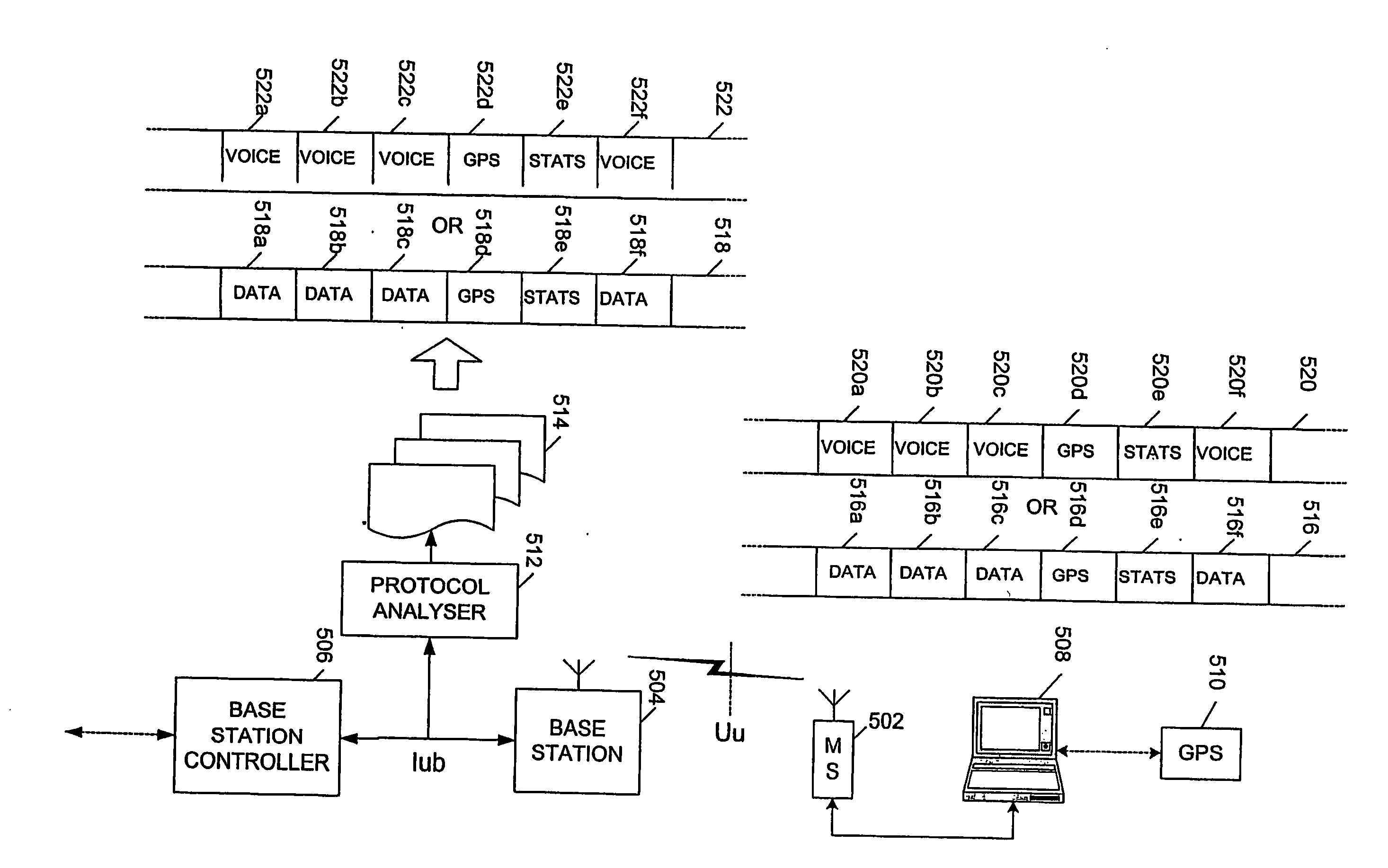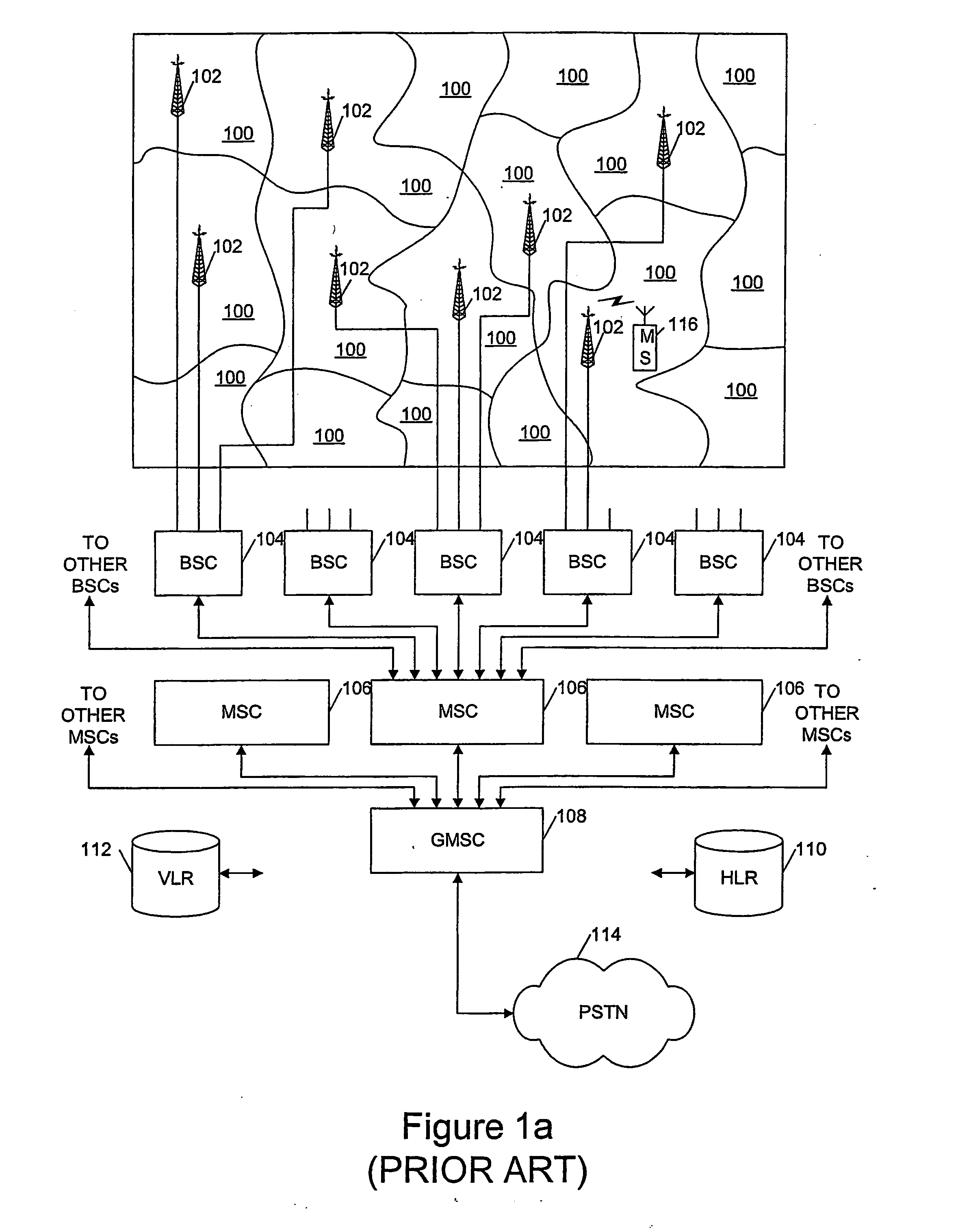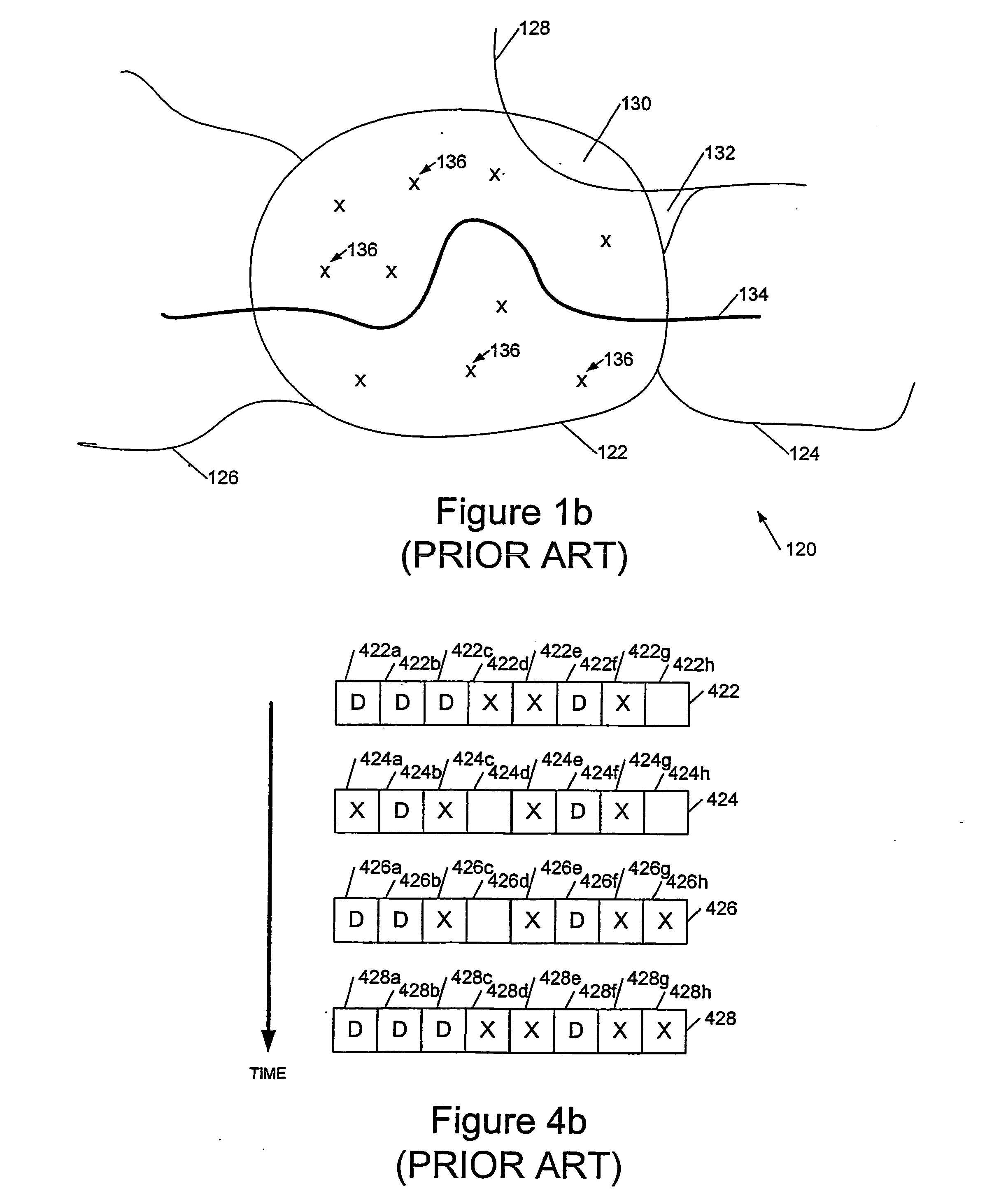Data transmission systems
a data transmission system and data technology, applied in digital transmission, electrical equipment, security arrangements, etc., can solve problems such as complex heuristics of network operators, gaps in coverage, and further complicated considerations
- Summary
- Abstract
- Description
- Claims
- Application Information
AI Technical Summary
Benefits of technology
Problems solved by technology
Method used
Image
Examples
Embodiment Construction
[0111] Referring now to FIG. 5, this conceptually illustrates a method of testing a digital mobile phone network. A mobile station or handset 502 is in two-way radio communication with a base station 504, which in turn communicates with and is controlled by a base station controller 506 across an Iub interface. A protocol analyser 512 is coupled to the Iub interface connection between base station 504 and base station controller 506, and is thus able to capture all the signals flowing between the base station and the base station controller and to record these in a series of data files 514 spaced at, for example, 15 minute intervals.
[0112] A terminal 508, such as a laptop computer, is connected to mobile station 502 for sending and receiving commands and data to and from the mobile station and thence to another device (not shown). This further device may be another mobile communications device on the same or another network or it may be a device connected to an external network suc...
PUM
 Login to View More
Login to View More Abstract
Description
Claims
Application Information
 Login to View More
Login to View More - R&D
- Intellectual Property
- Life Sciences
- Materials
- Tech Scout
- Unparalleled Data Quality
- Higher Quality Content
- 60% Fewer Hallucinations
Browse by: Latest US Patents, China's latest patents, Technical Efficacy Thesaurus, Application Domain, Technology Topic, Popular Technical Reports.
© 2025 PatSnap. All rights reserved.Legal|Privacy policy|Modern Slavery Act Transparency Statement|Sitemap|About US| Contact US: help@patsnap.com



